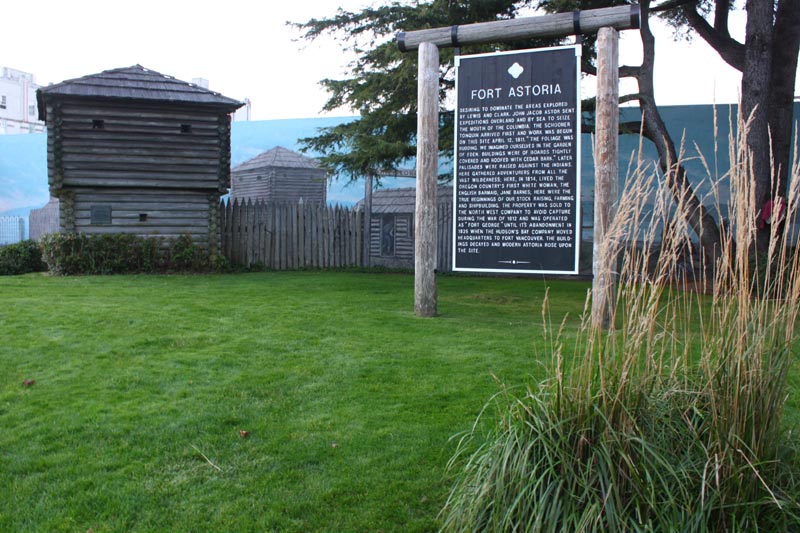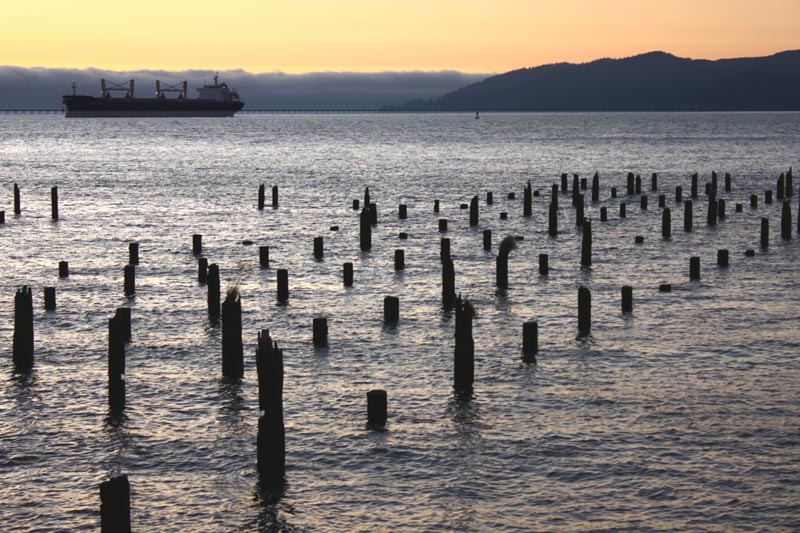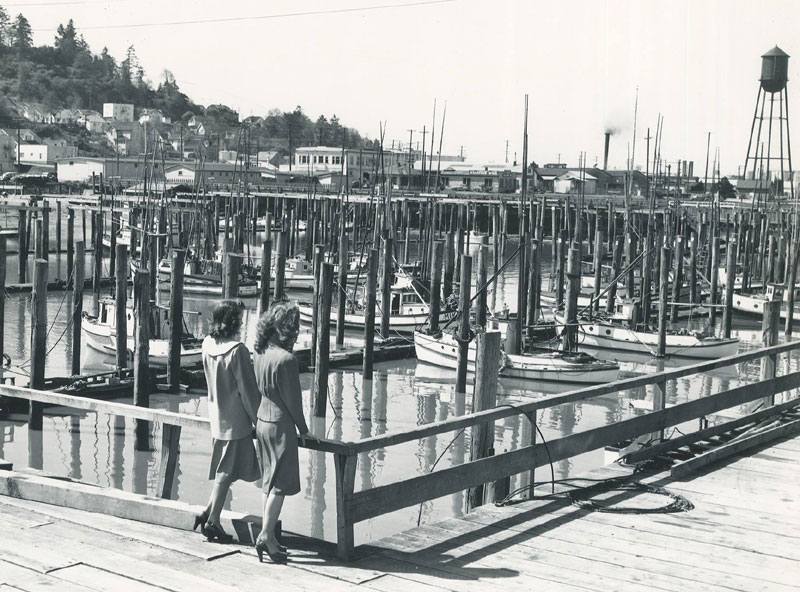Astoria History Timeline: 200 of Years At the Top of Oregon Coast
Published 08/24/21 at 5:38 AM PDT
By Oregon Coast Beach Connection staff

Includes exclusive listings; some specials in winter
In Cannon Beach:
Includes rentals not listed anywhere else
In Manzanita, Wheeler, Rockaway Beach:
Some specials for winter
In Pacific City, Oceanside:
Some specials for winter
In Lincoln City:
Some specials for winter
In Depoe Bay, Gleneden Beach:
Some specials for winter
In Newport:
Look for some specials
In Waldport
Some specials for winter
In Yachats, Florence
Some specials for winter
Southern Oregon Coast Hotels / Lodgings
Reedsport to Brookings, places to stay; winter deals
(Astoria, Oregon) – One place on the Oregon coast is singular in its truly dichotomous existence, a kind of aesthetic plurality where it manages to straddle the quirky and downhome while still going upscale. Astoria is a unique place with likely the richest history on the coastline as well, and it surrounds you at every turn.
Yet you often don't know what you're really looking at around here, so in that spirit comes this timeline of Astoria's history.
Winter of 1805-06. Lewis & Clark and the Corps of Discovery settle in the area for the winter, laying out Fort Clatsop in a spot that is very likely where the replica and national park are now.
1811. A small group of Americans sent by John Jacob Astor established Astoria and claimed the land for the U.S. as well as made their stamp on the area for fur trading. A mere two months later, a group of British came by to do the same thing but were thwarted by the Americans' presence. They named it after their employer – who never set foot in the place. However, some of his descendants did.
This was the first permanent settlement west of the Rockies.

1812. As the War of 1812 broke out, the Astorians sold everything to a British fur trading company. Then in 1813, the Brits invaded the north Oregon coast and Washington area and took over Astoria, renaming it Fort George. You can see that very spot next to Fort George Brewery in Astoria now.
1818. Fort George was finally turned back over the U.S. after a treaty was signed.
1846. In this year, the Canadian – U.S. border was established, giving the U.S. the northwest territories that would soon become Idaho, Washington, Oregon and more. It wasn't until about now that the area was resettled. At this point, just a few remnants of Fort George remained, but at least they had definitive proof of where it was.
Throughout the next decade, the town began to explode in population and activity with fishing and logging.

Astoria in the 1840s
1847. First post office was established in the north Oregon coast town.
1866. The first fish cannery sprouted along the lower Columbia, with Astoria getting its first in 1874. Within a decade, dozens populated the region, employing many Finnish and Chinese. The latter were shut out of the work force with the Chinese Exclusion Act later on.
1876. Astoria was officially incorporated. By the 1870s, locals began fearing the fish population might be coming to a breaking point in this part of Oregon coast. It did by the end of the century.

St. Mary's Hospital in the 1890s
(courtesy Oregon State Archives)
1883. The first of two devastating fires in Astoria history hits, likely started by two kids smoking in a sawdust pile.
1911. Astoria celebrated its centennial, and then in 1914 the city bought the area now known as Coxcomb Hill. This was the beginning in earnest of the Astoria Column.
1922. Planning progress was made on the Astoria Column, but a massive fire destroyed just about all of downtown Astoria. It was especially destructive because so much of the town was actually built on wooden piers. Sidewalks were wooden beneath as well, all of which caused a conflagration considered one of the worst in Oregon history.
1925 – 26. The basic concept of the Astoria Column was dreamed up, and then finalized just before building began in spring of ‘26. It opened to the public on July 1 (see history of Astoria Column).
1930s. Albacore tune appears off the Oregon coast and a new canning industry is born, taking over salmon.

Most pilings you see in Astoria are where canneries once thrived
World War II Years. The Column was shut down and used by the military, and the port becomes a naval hub to some degree. Fort Stevens is fired upon by a Japanese sub early in the war, but never shoots back. Where a Japanese Sub Fired on Oregon: Battery Russell and Fort Stevens

Astoria in the '40s (Oregon State Archives)
1961. Canneries in Astoria unite under one name: Bumble Bee Tuna.
1966. The Astoria-Megler Bridge opens, uniting the Washington coast with the Oregon coast via cars. The region soars in tourism interest.
1980. The last of the tuna canneries close and Astoria's economic focus becomes logging and tourism. In the early ‘80s, a string of highly successful movies get filmed here (see Filming Goonies in Astoria), later including Kindergarten Cop, Short Circuit, and later on Free Willy and The Ring, among others.
Some of the stately Victorian homes here – still fixer-uppers – go for as little as 10 grand during this decade.
Hotels in Astoria/Seaside - Where to eat - Astoria Maps and Virtual Tours
Cannon Beach Lodging
Nehalem Bay Lodgings
Manzanita Hotels, Lodging
Three Capes Lodging
Pacific City Hotels, Lodging
Lincoln City Lodging
Depoe Bay Lodging
Newport Lodging
Waldport Lodging
Yachats Lodging
Oregon Coast Vacation Rentals
Oregon Coast Lodging Specials
More About Oregon Coast hotels, lodging.....
More About Oregon Coast Restaurants, Dining.....
LATEST Related Oregon Coast Articles
Through 2 a.m. likely best, but some lights possible through dawn June 1 - 2. Space weather, astronomy
Rare Sperm Whale Stranding on N. Oregon Coast, Was Hit by Boat
Showing up near Gearhart, it will decompose naturally. Marine sciences
Coast Guard Barque 'America's Tall Ship' Coming to Portland Rose Fest, N. Ore...
Portland events: June 5 - 8; Astoria events June 13 - 15. Weather
Bright and Active Arietids Meteors May Hit Pre-Dawn Hours of Oregon, Washingt...
Look to east hour before sunrise and you may catch a show. Sciences, astronomy, weather
Why Now Could Be a Great Week for Spotting Killer Whales on Oregon Coast - Video
A good dozen documentations around Depoe Bay, Newport, Coos Bay, Bandon, Tillamook. Marine sciences
Summer Road Work, Traffic Issues Along Oregon Coast Include Astoria, Garibald...
Some daylight closures include bridges, OR 22, OR 18, OR 26, more. Travel tips. Seaside, Cannon Beach, Lincoln City. Travel tips
Pacific City Oregon Weather, 7-Day Forecasts, Live Conditions, Radar, Webcams...
Updated Constantly: Pacific City, Tierra Del Mar, Oregon Weather, Cams, Buoy Observations, Tides, Warnings - Alerts
Oregon Coast Has World's Oldest Harbor Seal, Celebrating 50 Years Soon
June 3 at Oregon Coast Aquarium in Newport. Newport events
Back to Oregon Coast
Contact Advertise on BeachConnection.net
All Content, unless otherwise attributed, copyright BeachConnection.net Unauthorized use or publication is not permitted




















































